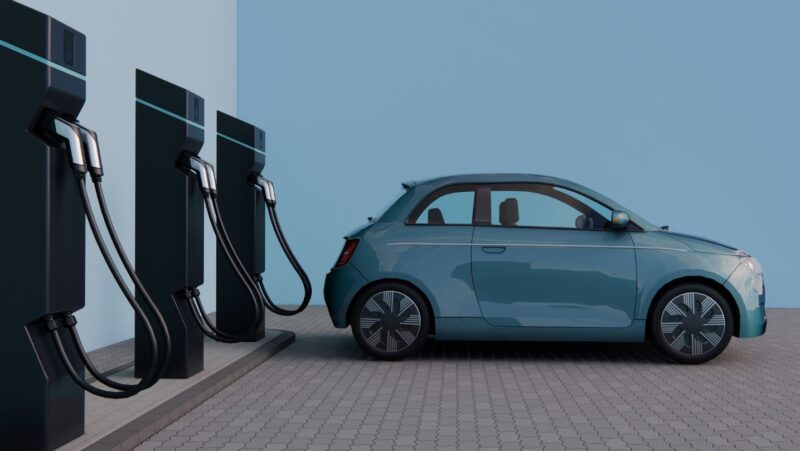 Have you ever wondered how electric fleet management can revolutionize your business operations?
Have you ever wondered how electric fleet management can revolutionize your business operations?
With the increasing popularity of electric vehicles, it is essential to understand the essentials of managing an electric fleet effectively.
From the benefits of adopting electric vehicles to the strategies for successful implementation, this discussion will uncover the truth behind electric fleet management and provide you with valuable insights to stay ahead in this evolving industry.
So, buckle up and get ready to explore the world of electric fleet management and how it can power up your business.
Benefits of Electric Fleet Management
There are numerous benefits to implementing electric fleet management, making it a strategic and forward-thinking choice for businesses. One of the key advantages is improved energy efficiency. Electric vehicles (EVs) are known for their high energy efficiency, converting a larger percentage of energy from the grid to power the vehicle compared to internal combustion engines. This translates into reduced fuel consumption and lower greenhouse gas emissions, helping companies meet their sustainability goals.
Cost savings are another significant benefit of electric fleet management. EVs have lower operating costs compared to traditional vehicles. They require less maintenance, as they’ve fewer moving parts and don’t require oil changes. Additionally, electricity is generally cheaper than gasoline or diesel, resulting in lower fuel expenses. Companies can also take advantage of government incentives and tax credits for adopting electric vehicles, further reducing their costs.
Furthermore, electric fleet management allows businesses to strategically plan their energy usage. With the right infrastructure in place, companies can schedule vehicle charging during off-peak hours when electricity rates are lower. This not only saves money but also helps balance the grid by utilizing electricity during times of low demand.
Overcoming Challenges in Electric Fleet Implementation
Implementing electric fleet management can present various challenges that businesses must overcome in order to successfully transition to electric vehicles. One of the major challenges is the need for a robust charging infrastructure. Unlike traditional fueling stations, electric vehicles require charging stations that are strategically located and easily accessible.
Businesses must invest in the installation of charging infrastructure at their facilities or ensure that their drivers have access to public charging stations. This requires careful planning and coordination to ensure that there are enough charging points to meet the demand of the fleet.
Another challenge is range anxiety, which refers to the fear of running out of battery power before reaching a charging station. This is especially prevalent among drivers who are used to the convenience and long range of traditional gasoline-powered vehicles.
To overcome range anxiety, businesses can invest in electric vehicles with longer-range capabilities or provide drivers with access to a network of charging stations that are strategically located along their routes. Additionally, businesses can use telematics and fleet management software to monitor the battery levels of their vehicles and provide real-time information to drivers about the nearest charging stations.
Strategies for Successful Electric Fleet Management
To successfully manage an electric fleet, businesses must develop strategic approaches that address charging infrastructure, range anxiety, and other key factors. Fleet optimization is crucial in maximizing the efficiency and performance of your electric vehicles (EVs). It involves analyzing data on vehicle usage, driver behavior, and charging patterns to identify areas for

improvement and implement changes that can reduce costs and increase productivity.
One essential strategy for successful electric fleet management is to invest in a reliable and scalable charging infrastructure. This involves installing charging stations at strategic locations, such as depots, office buildings, and public spaces, to ensure that your vehicles have access to convenient and efficient charging. It’s also important to consider the charging capacity of the infrastructure to meet the demands of your fleet. Having a comprehensive charging network will help eliminate range anxiety and ensure that your vehicles are always ready for use.
In addition to charging infrastructure, it’s crucial to implement effective range management strategies. This includes monitoring the battery levels of your vehicles in real time and planning routes that optimize range and minimize the need for additional charging stops. By leveraging advanced telematics systems and route planning software, you can ensure that your vehicles are operating at peak efficiency and minimizing unnecessary downtime.
Furthermore, adopting a proactive maintenance approach is vital for successful electric fleet management. Regularly monitoring the health and performance of your vehicles’ batteries and other components can help identify potential issues before they become major problems. This can minimize downtime and ensure that your fleet remains operational and efficient.
Future of Electric Fleet Technology
The future of electric fleet technology holds immense potential for optimizing efficiency, reducing costs, and revolutionizing the way businesses manage their fleets.
Two key aspects that will shape this future are the expansion of charging infrastructure and the integration of renewable energy sources.
First, charging infrastructure expansion is crucial for the widespread adoption of electric fleets. As the number of electric vehicles on the road increases, businesses will need to ensure that their fleets have access to a reliable and convenient charging network. This will require the development of more charging stations, both public and private, to support the growing demand. Additionally, advancements in fast-charging technology will further enhance the efficiency of fleet operations by reducing charging times and increasing vehicle uptime.
Second, the integration of renewable energy sources into electric fleet technology will play a vital role in reducing carbon emissions and achieving sustainability goals. By harnessing solar or wind energy to power electric vehicles, businesses can minimize their environmental impact and take advantage of cost-saving opportunities. This integration will require the installation of renewable energy generation systems, such as solar panels or wind turbines, at fleet facilities or in strategic locations to ensure a clean and reliable energy supply.






